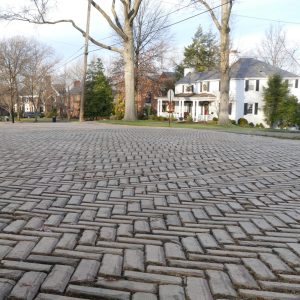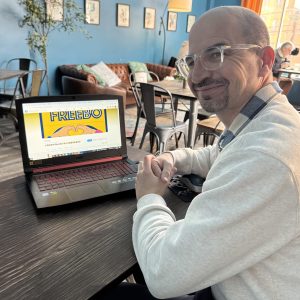playing through spain
The Pittsburgh Youth Symphony Orchestra, founded in 1945, is an ensemble with an illustrious past, teaming nearly 90 dedicated young musicians and an equally hardworking staff. With experience playing in China and parts of eastern Europe, the Orchestra this year embarked on its fifth tour. This time, we set our sights on Spain in June.
The tour would be a dramatic end to my third year in PYSO, as a high school junior and first violinist. I auditioned at the end of eighth grade, and ever since I received the acceptance letter in the mail, the orchestra has been an important part of my musical career. Spain, hopefully, would be the culmination of that time spent so far in the orchestra.
After arriving at the Madrid Barajas Airport on the morning of Sunday, June 18, after a nine-hour flight, the half of the orchestra on our plane discovered the other half of the orchestra, which had been on a different airline, was forced to stay in Atlanta due to faulty bathrooms on their plane. We were to spend the first day on tour sightseeing alone. We pushed on towards the Parque Europa (a mini recreation of Europe’s landmarks) and the Museo del Prado, which housed some of Spain’s most important works of art.

At 5:30 a.m. the next day, the rest of the orchestra landed in Madrid, which meant the entire orchestra would be able to enjoy the sightseeing tour.

We were able to stop and take pictures at the Plaza del Toro and even the Royal Palace of Madrid, the official residence of the Spanish Royal Family used only for state ceremonies.


The next day, we traveled by bus to Ávila, a city northwest of Spain best known for its well preserved medieval walls. Situated at the crown of a rocky hill and surrounded by a dry, unforgiving wilderness, it was a welcome sight to behold.


We played that night in the Sala Sinfonica of the Lienzo Norte Congress Center. Our general repertoire for Spain consisted of selections from Porgy and Bess, City of Bridges (an original piece by Hannah Ishizaki, one of our violinists, who is a Mt. Lebanon High School senior), Don Juan, and Tchaikovsky’s fifth symphony.

After Ávila, we had a concert the next day on the 21st at El Escorial, the historical residence of the King of Spain. It is positioned at the foot of Mt. Abantos in the Sierra de Guadarrama, where we were able to tour the royal monastery and enjoy the stunning sixteenth century architecture.
As part of the Festival de Verano, or Summer Festival, we performed in the Teatro Auditorio de San Lorenzo de El Escorial.

After leaving Madrid en route to Valencia, we stopped at Toledo for more sightseeing. Our first impression of the city allowed us to see both the Alcázar and the Cathedral of Toledo dominating the skyline.

Known as the “City of Three Cultures” for its historical coexistence of Christians, Muslims, and Jews, it had plenty to offer in terms of religious sightseeing opportunities. I visited the Cathedral and was amazed by its extraordinary design.
After traveling the rest of the way to Valencia and settling in at our hotel, we spent the following two days touring the city and visited the beach.

On our last day in Valencia, June 24, we were scheduled to play with the Joven Orquesta de Cuenca in the Palau de la Música. At the last second, however, we were informed that the air conditioning had malfunctioned in the Palau and we were eventually relocated to the Escuelas San Josė, an elementary school in the heart of Valencia. Although there was no air conditioning either and we played in stiflingly hot conditions, it was one of our best performances yet!



We performed the following two days with the Cuenca Orchestra and continued sightseeing, this time in Barcelona. We visited the Magic Fountain, Montserrat, which was a mountaintop monastery, and my personal favorite, the Sagrada Familia. The Sagrada, as the tour guide explained to us, was designed by Catalan architect Antoni Gaudí. Until his death in 1926, he helped shape the building into one of the most spectacular interpretations of Gothic architecture in recent memory. To this day, people are still hard at work achieving his dream and the Sagrada is projected to be complete in 2026.

Our last day, Tuesday, June 27, featured our last concert in Spain. For many musicians in PYSO, it would also be their last performance with the orchestra, as they graduated from high school and moved on. As the applause swelled as we stood after the encores. However, one thing was clear: it was time to go home.
Anne Jin is a high school volunteer in the Mt. Lebanon Public Information Office.





